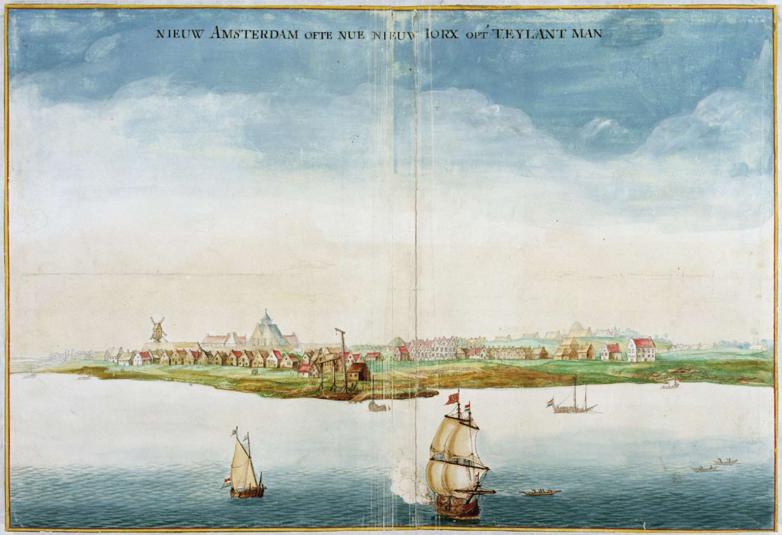“We’re very excited to share this rare glimpse into life in New Amsterdam as we mark the 400th anniversary of the city with our visitors,” said Dr. Louise Mirrer, president and CEO of New-York Historical. “The Castello Plan, along with documents, coins, maps, and even a piece of the Dutch canal, will help visitors envision how New Amsterdam was a place of dynamism and opportunity as well as enslavement and hardship.”
The Castello Plan provides a rare glimpse of everyday life in New Amsterdam, revealing a small but complex city at the southern tip of the island then known as Mannahatta. The Castello Plan was painted in Amsterdam by artist Johannes Vingboons, based on a surveyor’s plan commissioned by New Amsterdam’s leaders. It was sold to the Archduke of Tuscany, who hung it in the Villa di Castello in Florence, hence the name. The Castello Plan shows the city at its height and extraordinary details, including gardens, docks, canals, and a windmill. The 1,500 inhabitants lived in about 300 houses. Thanks to an accompanying census, the names of the owners of each home are known.
In 1626, Peter Minuit, director of the colony of New Netherland, purportedly acquired the island that would eventually be known as Manhattan from a local tribe, probably ancestors of the people known today as Lenape, Munsee, or Delaware. The Native people didn’t consider it a purchase, as they didn’t share the European concept of property transfer; to them, it was a land-use agreement, which needed to be renewed and affirmed on a regular basis.
When word of the land transfer reached Europe, a Dutch government official, Pieter Schagen, wrote a letter discussing the “purchase” of the island. This letter, on loan from the Hague in the Netherlands, is on view in the installation. In it, Schagen notes that “our people…have purchased the Island Manhattes from the Indians for the value of 60 guilders.” While the amount of goods represented a symbol of alliance, a 19th century historian converted the 60 guilders into dollars, and thus was born the myth that the Dutch bought Manhattan for $24. The letter is the only record that exists of that “purchase”, which was then followed by hundreds of other purchases, treaties, and deceptions by which Europeans slowly took the continent of North America from its Native inhabitants.
Most surviving artifacts from New Amsterdam relate to European settlers, but in 1984, archaeologists found a collection of objects outside of the home of Cornelis Van Tienhoven, Peter Stuyvesant’s secretary, on present-day Pearl Street: a mpungu thought to be created circa 1660 by an enslaved person. Mpungu means “to stick together” and refers to a gathering of objects that in central African culture were invested with healing powers. This collection, featuring bone and shell fragments, marbles, nails, pieces of pipe stems and bowls, glass beads, a copper thimble, and other items, was found in a basket buried in the ground, covered with a Dutch plate. It is an example of how Africans in New Amsterdam sustained their cultural practices in the face of adversity.
“Having the historic Castello Plan visit modern-day New York City from its home in Florence, Italy, gives New Yorkers the opportunity to experience the rich history of their home town through the lens of those people who 400 years ago began this magnificent experiment in multi-cultural, big-city living, including the Indigenous, the African American, the Dutch and others, all of whom made up the vibrant and diverse tapestry that was New Amsterdam, and remains to this day as New York City,” said Ahmed Dadou, Consul General of the Netherlands in New York.


















